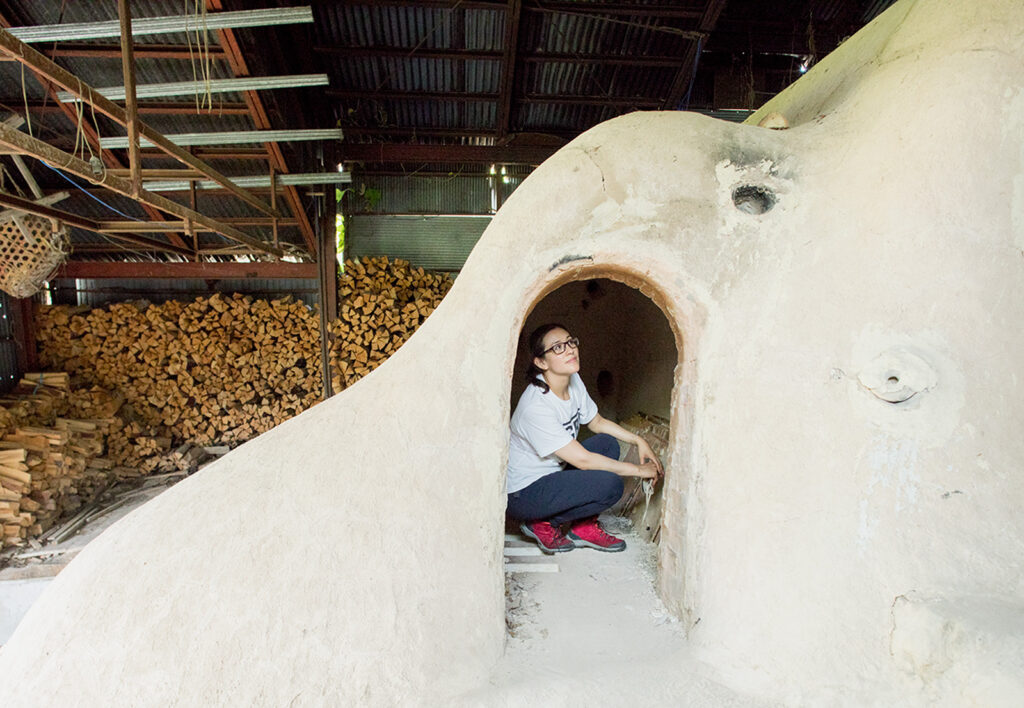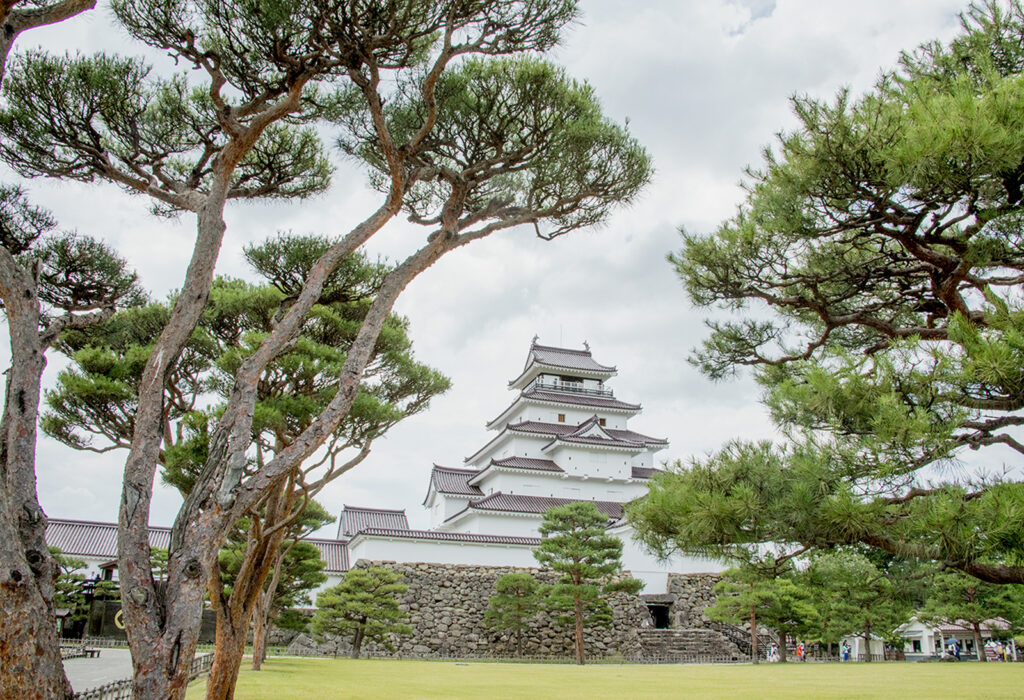Marvelous Festivals and Folklore
The Shimotsuke Kaido, one of Aizu’s renowned five highways, spans roughly 125 kilometers, linking Aizuwakamatsu Castle to Nikko Shrine’s post town Imaichi-juku. This ancient route served as the most direct path connecting Aizuwakamatsu to the capital of Edo. It played a pivotal role in facilitating the Sankin-kotai system, an arrangement for alternating governance by feudal lords, and was frequently used by domains such as Aizu, Shonai, and Yonezawa.
It flourished as an industrial thoroughfare, annually transporting tens of thousands of bags of Kaimai (a unit of rice, serving as stipends for samurai) for the Aizu domain. This sustenance was vital for the samurai residents in Edo. Simultaneously, it played pivotal role in the transportation of hemp, a significant industry in the Oku-Aizu region.
Last but not least, it served as a pilgrimage path leading to revered destinations such as the Nikko Toshogu Shrine, Futara-san Shrine, and Mount Yudono, attracting renowned figures from various historical periods. During the Sengoku period, luminaries like Date Masamune and Toyotomi Hideyoshi, in the late Edo period, Yoshida Shōin, and in the early Meiji period, the intrepid traveler Isabella Bird, known as the “Victorian Lady Traveler,” all embarked on their northward journeys from Nikko, traversing this venerable route.
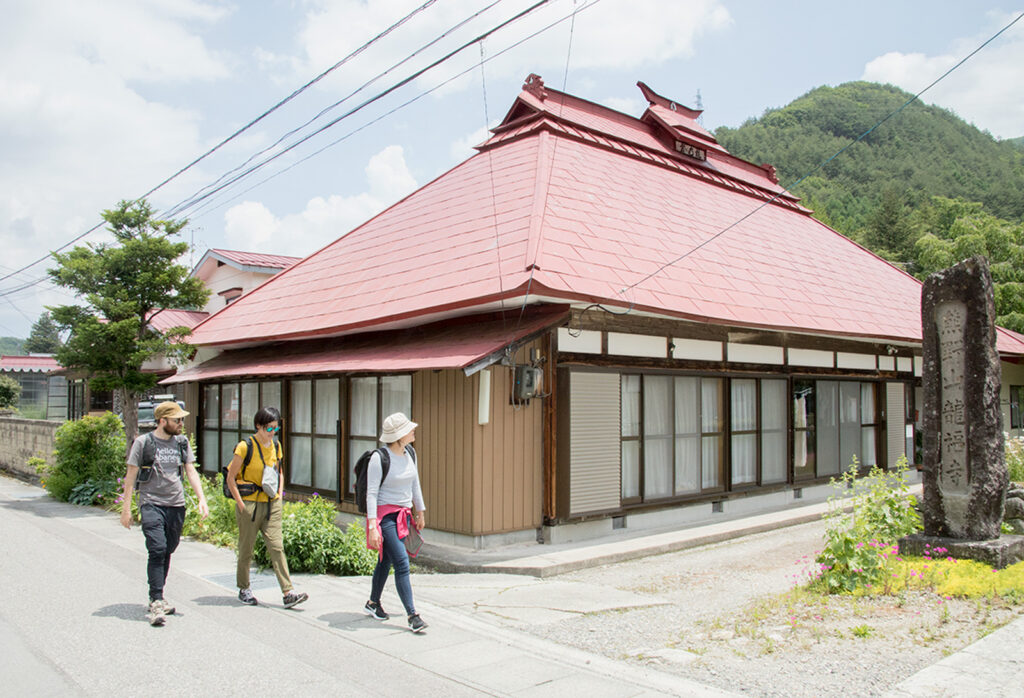
The rendezvous for the journey with our Mexican guest Viviana, was the Aizu Kogen Oze-guchi Station on the Aizu Railway. This journey covered approximately 60 kilometers, commencing right here and ending at Tsurugajo Castle in Aizu-Wakamatsu. We walked about 3 kilometers along National Route 352 from the station until we merged onto Route 121. This marked the beginning of the Shimotsuke Kaido.
Our journey proceeded along the road, with our first halt being the Oku-Aizu Museum. Inside the museum, a knowledgeable researcher by the name of Watabe Yasuto eagerly enlightened us about the rich history and folk traditions of Oku-Aizu. Throughout the Edo period, Oku-Aizu was governed directly by the Shogunate as the Minamiyama Okura-iri domain. This region was draped in expansive evergreen forests of beech and Japanese horse chestnut, giving rise to a flourishing industry centered around crafting wooden bowls from beech wood. These meticulously crafted wooden bowls were then sent to Aizu Wakamatsu, where they played a vital role in the production of Aizu lacquerware, a renowned craft distributed throughout the nation.
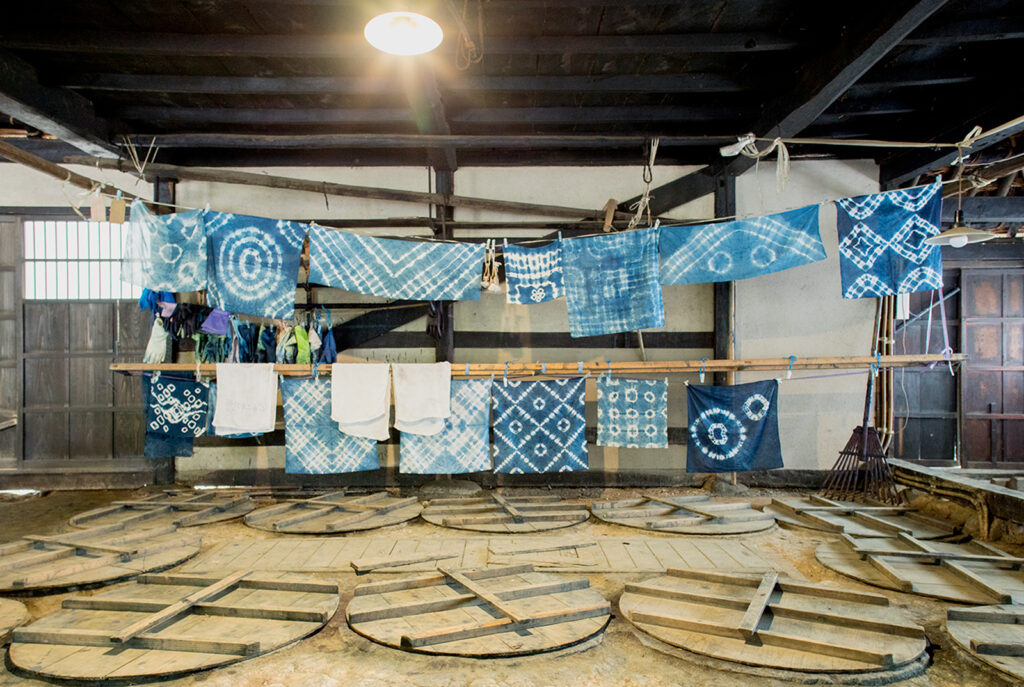
The Shimotsuke Kaido, responsible for channeling commodities such as Kaimai (rice allocated for feudal lords), Wan-kiji (wooden bowl bases for lacquerware), hemp, and tobacco, implemented a distinct method of transportation referred to as Nakazuke Doja. While the Shogunate officially operated under the Tenma system, which involved relayed horse stations at each inn for goods transport, this system was restricted to goods of commercial nature and self-consumption. In simpler terms, it facilitated the uninterrupted transport of specific goods without the need for transfers at inn stations. Although the carriage of commercial cargo for hire was prohibited (ie., the average Joe with a horse wasn’t allowed to make side money by carrying new cargo on the way to pick up or deliver official orders) , the practice of continuous transportation proved to be more pragmatic. Consequently, this mode of transportation persisted well into the Meiji era. Along the road, numerous horse inns were established to cater to the Nakazuke Doja who couldn’t stay at conventional inn stations. (As explained by Watabe-san)
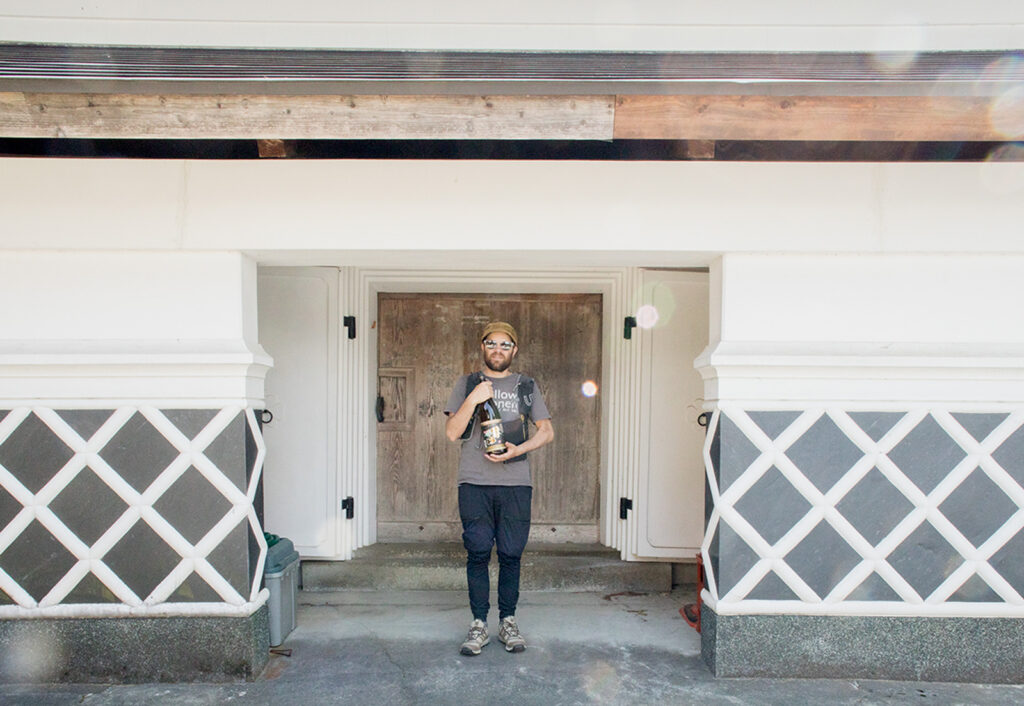
A prominent folk tradition in Oku-Aizu is known as Nōson Kabuki, or rural Kabuki theater. The Shogunate had imposed a ban on common people participating in Kabuki performances, fearing it might divert their attention from agricultural work and family responsibilities. Nevertheless, within the Minamiyama Okura-iri territory, Kabuki was granted special permission as a primary form of entertainment for the common populace. Within this domain, comprising 140 villages with 170 rural stages, Kabuki performances flourished, establishing it as one of the foremost regions for rural Kabuki in the entire country.
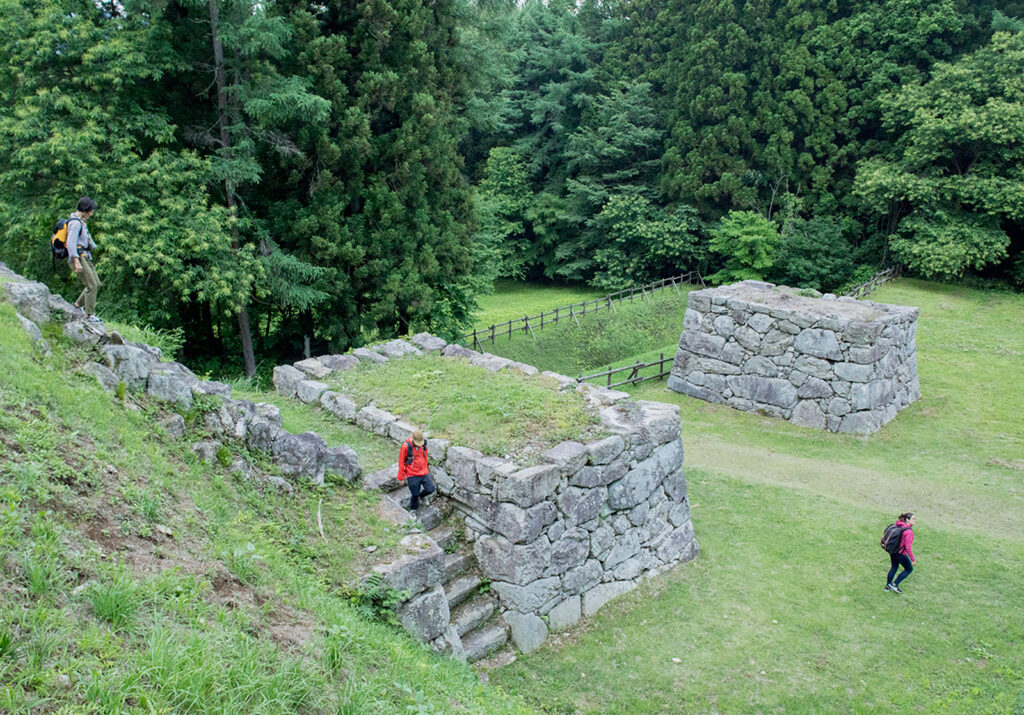
“In reality, affluent hemp merchants leveraged their rich resources to establish rental enterprises for Kabuki costumes and props. These businesses went as far as providing skilled dressers, who were deeply knowledgeable about Kabuki performances, known as Ishō-mawashi, when customers rented costumes. This commitment to excellence played a pivotal role in the continued prosperity and evolution of Kabuki culture within the Minamiyama Okura-iri territory.
Around 1760, the rural stages transformed into mobile stages referred to as “dashi,” where Kabuki performances were conducted. One prominent illustration of this shift is the “Aizu Tajima Gion Festival,” recognized as an Important Intangible Folk Cultural Asset, and reknown for its captivating float processions.
In the evening, we reached Tajima. The roots of the Tajima Gion Festival can be traced back to the Kamakura period and it continues to be celebrated with such fervor that it holds the distinction as being one of Japan’s three most prominent Gion festivals. The Aizu Tajima Gion Hall houses ongoing exhibits showcasing the magnificent floats of the Gion Festival.
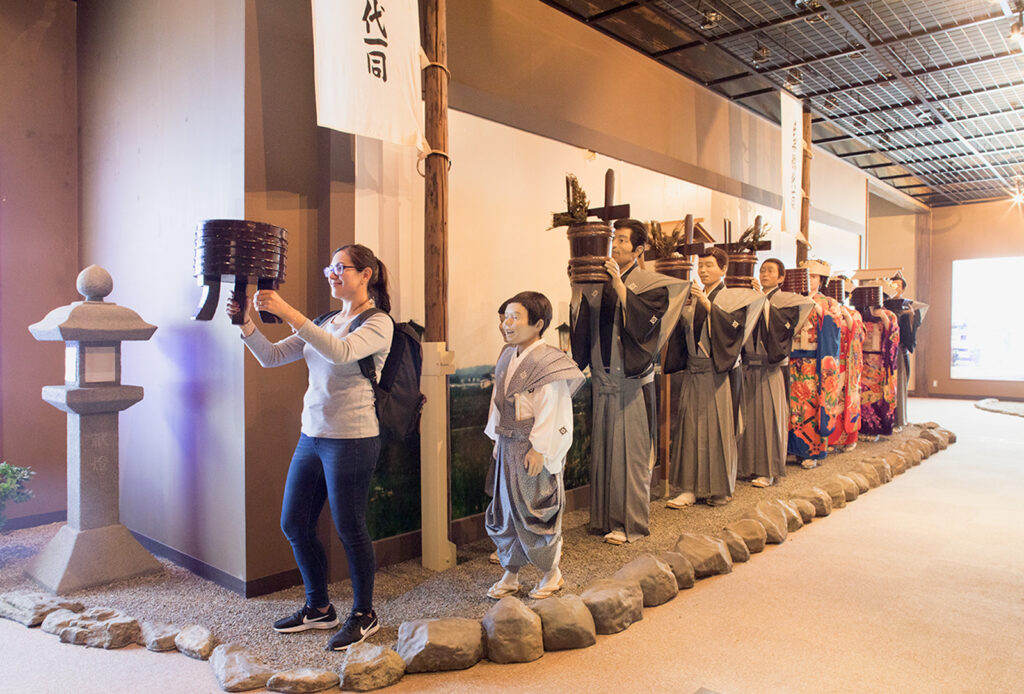
The “Aizu Tajima Gion Festival” is an annual event that takes place from July 22nd to the 24th and is famous for its Nanahokai March, also known as the Bridal Procession. During this procession, offerings of doburoku (unrefined sake), red rice, and mackerel are presented to the deities. Men don formal kamishimo, while women wear black tomesode kimono, and unmarried women adorn themselves in bridal attire, complete with the traditional Shimada-mage hairstyle, as they participate in this grand procession.
The festival’s climax is the procession of floats, a tradition rooted in rural Kabuki performances. These large floats double as mobile stages for children’s Kabuki, featuring a stage at the front and a dressing room at the rear. Over the course of the two-day float procession, these floats make stops in front of residences around the local shrine known as “geiba,” where they present one-act plays of children’s Kabuki. While the responsibility of moving the floats to the next geiba lies with the adults, the children on the floats enthusiastically chant, “Oonsanyarekakero,” as they cheer on the adults. The festival reaches its peak as the palanquins are carried, rivaling the excitement of traditional so-called Fighting Floats. According to Watabe Tomohiro from the Aizu Tajima Gion Hall, this event “holds greater significance for the local people than even O-bon or New Year’s. It appears that the mindset of the locals, who have always been devoted to Kabuki, remains unchanged since the Edo period.
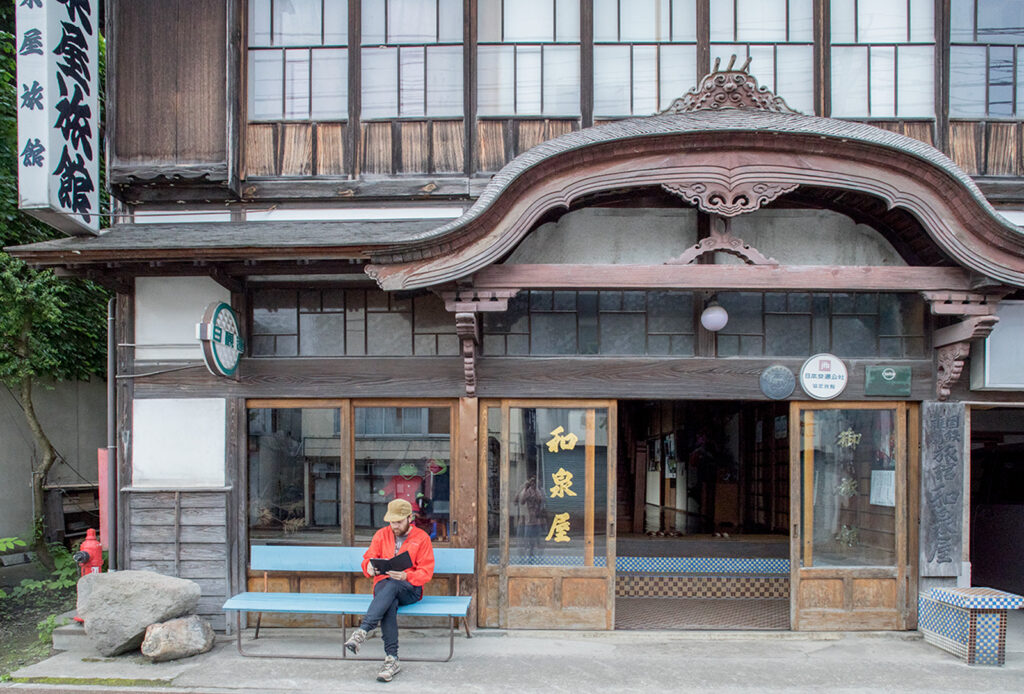
That evening, we found our accommodation at the Izumiya Ryokan in Tajima. This ryokan, established in 1933, boasts a rich history including its use as lodging for the occupying forces after World War II. The rooms facing the street, where you can witness children’s Kabuki performances in the geiba during the Gion Festival, are in such high demand that they’re typically booked a year in advance. Despite undergoing several renovations and expansions, the interior of the inn retains its labyrinthine charm, and the hostess graciously led us through its corridors. Viviana was deeply impressed by the numerous stories and artifacts from the pre-war and post-war Showa eras that are scattered throughout the inn, likening the experience to staying in a “living museum.”
The next day, we had the pleasure of being accompanied by Motoshima Yoshifumi, an advisor to the “Aizu Koboushi no Kai” (Aizu Straw Hat Society), for a guided expedition to Ouchi-juku. Along the way, we explored various points of historical interest, including the Tabehara Ichirizuka, a milestone erected during the road’s construction in 1667, the fabled “Heihou-ishi” associated with the legendary strongman Genba, the giant Zelkova “Nakayama no Okeyaki” with a remarkable estimated age of 1,200 years, and the “Numayama no Ishidatami,” a stretch of cobblestone road dating back to the Edo period. In contrast to the previous day’s journey, this route led us along an area full of more rugged, unpaved paths and forest trails, preserving the rustic allure of the old highway. Motoshima-san noted that during early summer walking events and guided tours organized by the Aizu Koboushi no Kai, it’s not unusual for participants to take a keen interest in foraging for mountain vegetables.
“Mountain udo, wild edible plants like taranome and warabi… If you bring some miso, you can enjoy them right after picking. While stoically retracing the historical footsteps can be fascinating, I want people to know that savoring local ingredients and the blessings of the mountains is also a delightful part of these road walks.”
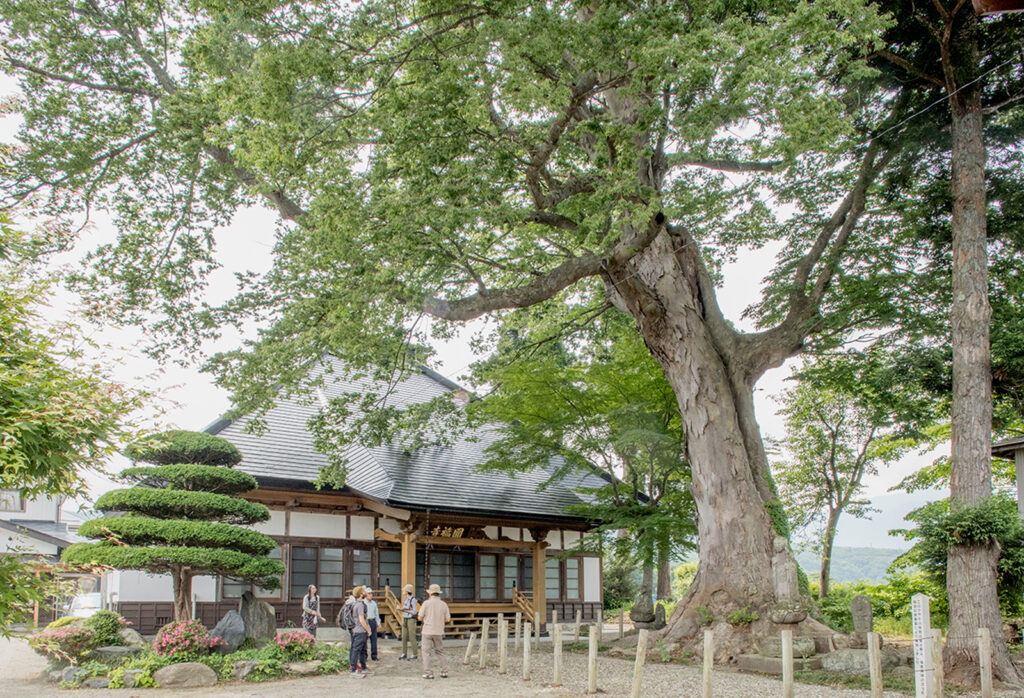
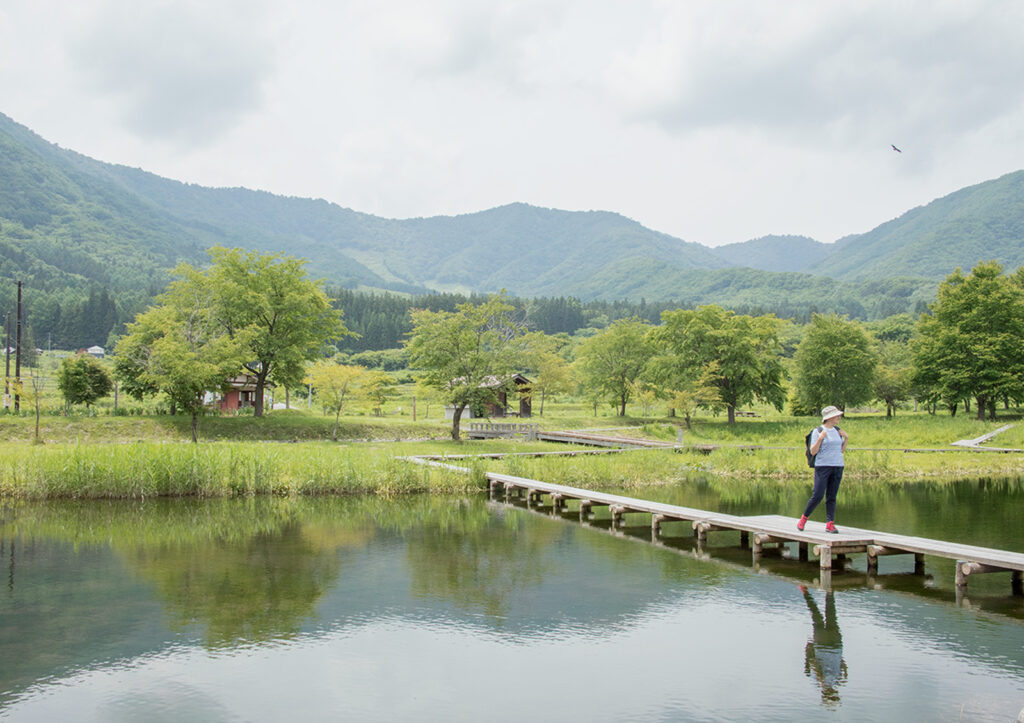
Our destination on the second day, Ouchi-Juku, is lined with old thatched-roof folk houses on both sides of the road, preserving the atmosphere of an Edo-period post town. The main street stretches for about 500 meters, featuring notable places like Minoya, where Isabella Bird stayed, and Misawa-ya, the birthplace of ‘negi soba’ (buckwheat noodles topped with green onion), a specialty of Ouchi-Juku. At the Ouchi-Juku Streetscape Exhibition Hall, featuring a reconstructed model of the main inn, you can explore the lifestyle of the mountainous villages that depended on agriculture.
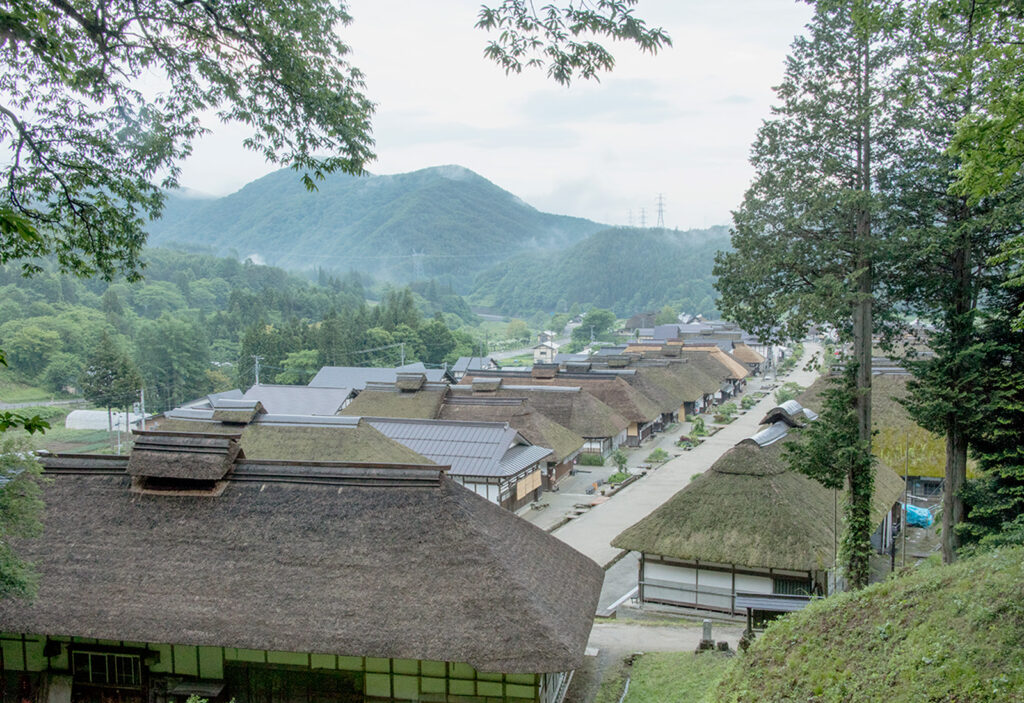
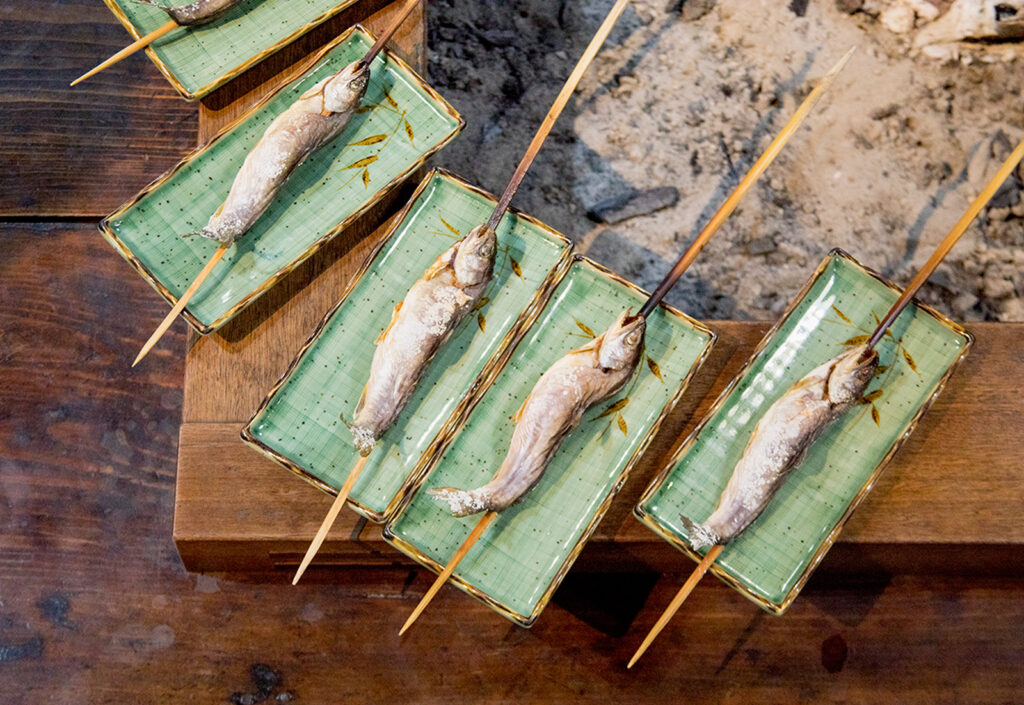
The following day, we crossed the challenging and often snow-covered Ouchi Pass and Hidama Pass to reach Aizu-Wakamatsu. Leaving Ouchi-Juku behind, we began to come across historical sites from the Boshin War, such as the ‘Twenty-Four Warriors Gravesite’ and the ‘Ouchi Pass Battlefield.’ Among them, the Ouchi Pass was the last critical point on the southern side that the Aizu Army had to defend at all costs. Along the ridgeline of the Ouchi Pass, fierce battles raged for three days. As we hiked through the beautifully wooded trail, surrounded by broad-leaved trees, learning about this history added a sense of melancholy to the scenery.
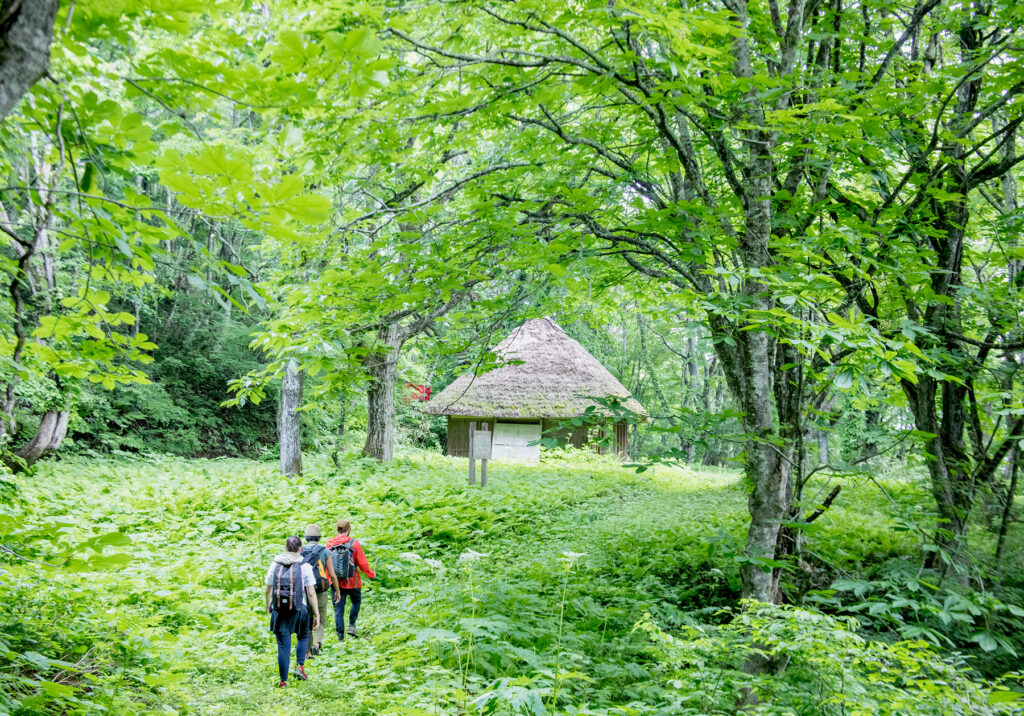
We descended from the Hidama Pass and passed the Sangun-Sakai-no-Tsuka, a mound marking the border between Aizu-Wakamatsu City, Aizumisato Town, and Shimogo Town. From there, the old road merged with Prefectural Route 131. We made a pit stop in Seto Town at a traditional shaved ice shop and visited the Munakata Kiln, a pottery workshop that boasts a history of 1,300 years, known for Aizu Hongoyaki pottery. Then, we headed straight for the final destination, Tsurugajo Castle.
“From the handcrafted indigo dyeing tradition that dates back to the Edo period to the museum-like ryokan, and walking along the old trails while bottling springwater… it was all so memorable. Being so close to things from 150 years ago and seeing them as part of everyday life made me realize that Japan has a different concept of time,” Viviana reflected. From the warring Sengoku period to the tranquil times of the Edo era and into our modern day, this thoroughfare, with its diverse converging narratives, continues to beguile travelers across the annals of time.
